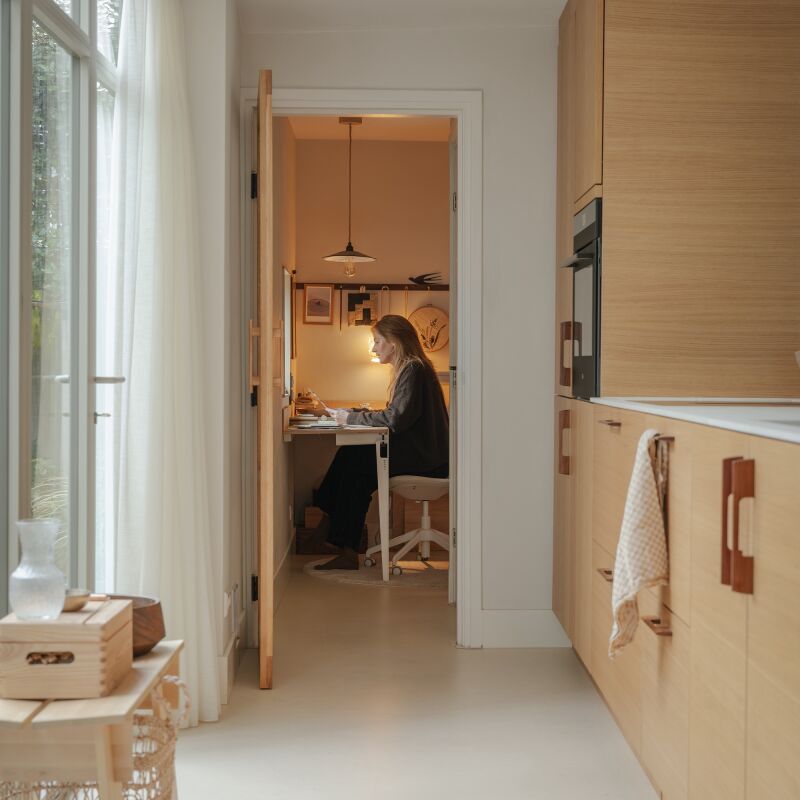Back in March, when John and Juli Baker and their two kids left Toronto for their farmhouse near Lake Ontario, they packed for spring break. On Day One the news came: school, not to mention the couple’s design shop, Mjölk, would not be reopening after the holiday. “With the entire country and much of the world shut down, we settled into isolation, indulging in baking, gardening, bike rides,” says John. Things went well thanks to the magical retreat the couple had recently finished—see An Antique Stone House Revived. But with online learning and business happening simultaneously, space started to feel tight. That’s when, as John explains it, a familiar quarantine fantasy came over him: “I dreamed of escapism, a room where one can be alone.”
The predictable prefab shed was not part of this picture. Eternally pondering elegant design solutions, John started to work on drawings of a building archetype he was fascinated with: the shepherd’s hut. Common for centuries in the UK—and now often converted as vacation cottages and even kitchens—these rolling one-room shacks were built as shelters during lambing season. “The honest farmer Gabriel Oak stayed in a shepherd’s hut in Thomas Hardy’s Far From The Madding Crowd,” points out John. “They can be carted wherever needed, and their lovely curved roofs and small proportions allow for simple comforts.”
Simple, yes: no plumbing or electricity. But how to build one of your own? Astonishingly, John figured out a way.
Photography courtesy of Mjölk.

“What made the hut a reality was our proximity to the Amish community here in Eastern Ontario,” John tells us. Conveniently, an Amish sawmill and a producer of buggy carts are three miles from the Baker farm—and John happened to notice that “the language of shepherd’s huts and the buggies are very similar: they both have curved roofs and steel wheels, so I thought this would be my best chance to find a producer.”

“Looking at my drawing of the steel wheel set and chassis, Eli took me out to his field and showed me an antique buggy chassis with cast-iron wheels sitting exposed to the elements,” says John. “Even though it had been there for years, he assured me it was still functional and could be refurbished. He joked he was happy to try something other than another chicken coop.”
Note that On the exterior, John specified black-stained pine “to re-create the tar-coated boards originally used in fishing huts and cottages in England: we tried to mix authentic craft and proportions with our own sensibility.”


For a guide to how John bleaches his floorboards, see Remodeling 101: Each Whitewashed Scandi Floors.










We’ve been huge fans of Mjölk for years:
- A Scandinavian -Inspired Kitchen with Hints of Japan and Steal This Look: The Mjölk Kitchen
- Mjolk Made: A Canadian Cafe Gets a Scandi Revamp from Toronto’s Cult Design Couple
- Remodeling 101: Easy Whitewashed Scandi Floors




Have a Question or Comment About This Post?
Join the conversation (8)